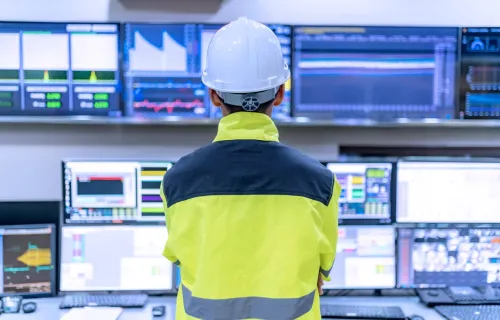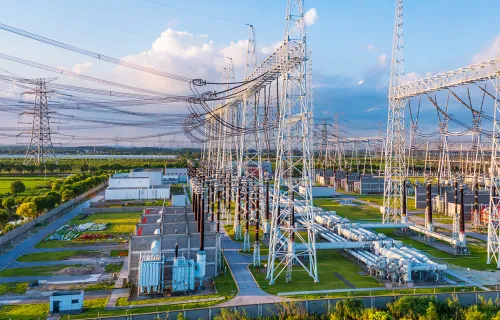The global energy transition and the need for deep decarbonization of our economies have paved the way for a new age of electrification. This will have a profound impact on the electricity industry compared to the experience of the past two decades.
Electric utilities are busy preparing for a wide, accelerated deployment of infrastructure of generation, transmission and distribution to maintain reliability, as well as bolstering demand-side management solutions. In addition to decarbonizing/electrifying their own processes, vehicles and buildings, large electricity end-users are busy developing electricity service resiliency solutions and self-generation, in anticipation of risks of supply bottlenecks. Meanwhile, data centers and computation capacity requirements are growing steadily, always needing more electricity.
The IEA cites electrification as a vital strategy to reach net-zero goals, due to its potential to mitigate emissions and decarbonize energy supply chains. Their Electricity 2024 report reveals that the share of electricity in final energy consumption is estimated to have increased from 18% in 2015 to around 20% in 2023 and projects it will near 30% in 2030. Despite this progress, the pace of electrification needs to accelerate markedly to achieve global decarbonization goals, especially as electricity’s share in final energy consumption is projected to approach 30% in 2030.
Modeling results generally forecast a two- to five-fold increase in electricity demand over the next 30 years, depending on the methodology and the specific goals of the modeling exercise.
In today’s world, we expect electricity supply to be reliable, accessible, and, increasingly, we expect it also to be sustainable. Over decades, we built an electrical infrastructure to meet these expectations. As electricity demand of EV, heat pumps and data centers grows rapidly, reliability and accessibility should not be taken for granted anymore – as illustrated by the increasing wait time before new electricity service connections in many areas of the globe.
Explaining this situation is the fact that the energy end-use in most countries is approximately 20% electricity and 80% other energy sources, primarily fossil fuels such as natural gas, petroleum products and coal. These fossil fuels are currently the true workhorses of industry. As we transfer over electricity as the one main workhorse of our buildings, transportation and industry, well need new low-carbon emission energy sources like hydropower, solar photovoltaic, wind power, tidal and nuclear generation, depending on the geography and local perspectives.
The electricity industry's ability to adapt and meet infrastructure needs
The projected year-over-year growth in electricity demand is expected to exceed historical trends; however, the industry is generally equipped to handle demand growth and the necessary investments in generation, transmission, and distribution infrastructure. In fact, the electricity industry has successfully managed demand growth in the past, as seen during the marked rise of air conditioning. While this new wave of electrification promises to much steeper than the rise of AC, CGI as a trusted technology advisor is helping its utility clients rising to the challenge. The success of the energy transition depends on the success of the electricity industry.
After a period of stagnation during the past 20 years, especially in the wake of the global financial crisis, the electricity industry is regaining the interest of investors. A sustained increase in investment, driven by reliable demand, is expected, which will lead to training and integrating new talent into the industry. Significant resources will need to be mobilized, resulting in increased costs and therefore potentially higher electricity bills.
The electrification of light-duty, medium-duty, and heavy-duty vehicles through the adoption of plug-in hybrid and battery-powered EVs is well-known, but the real "elephants in the room" of electrification are industrial processes and the electrification of in building heating and hot water systems. The increase in electricity demand expected from the electrification of these sectors is far more significant than the demand from the transportation sector.
Obstacles to overcome
The overall challenge facing utilities will be to deploy the necessary infrastructure on time, avoiding both shortages and overcapacity. Specifically, there are a few key areas of consideration:
- Addressing shortages, especially of specialized workers; of equipment needed to generate, transmit and distribute electricity; and capital shortages, or the challenge of raising capital
- Finding balance between deploying the necessary infrastructure on time, without overinvesting or overestimating forecasted growth, resulting in stranded assets
- Maintaining reliability of supply while infrastructure is deployed, avoiding brownouts and blackouts
- Bolstering resiliency behind the meter, as the accelerated need in deployment combined with anticipated shortages may result in lower reliability than previous experiences of certain areas of the grid or end-users
To meet these challenges, it will be necessary to:
- Adopt more rigorous and frequent forecasting
- Have more granular data on demand and consumption on a temporal and geographical basis
- Increase the value utilities receive from their data through applying data governance best practices
- Promote collaboration between different specialists through novel innovation approaches and design thinking workshop
- Build capability, and re-train trade people faster through modern digital-enhanced techniques
- Automate where possible to re-deploy workers to higher-value tasks
- Use more flexible and modular solutions
- Make electricity demand more responsive to market signals (accelerate/slow down as needed)
- Be able to quickly refurbish and redeploy resources
- Use software solutions to increase reliability by rerouting electricity and temporarily and minimally reducing services (rather than facing full-on rolling blackouts) while maintaining customer and social acceptability
What should you be doing?
- Become more agile so you can restructure and develop new business capabilities
- Obtain help to restructure your business and develop new business capabilities to cope with upcoming challenges, especially through innovation and digital technology solutions.
- Obtain a deeper understanding on local impacts you will be facing. It's time to better understand electrotechnology suppliers and markets, how they are being structured, what new business models are emerging and how these will affect you.
- Leverage battery-powered technologies. Although EVs present a challenge for demand, they can also contribute to the solutions for coping with the incoming demand growth, which also stems from heat pumps and other heat-producing electrotechnologies.
- Improve your organization’s ability to do electricity demand forecasting in local transmission and distribution grids by leveraging AI and Digital Twins.
- Modernize technology solutions and business processes so that you can better plan and orchestrate the maintenance and new construction of infrastructure (generation, transmission, distribution and new connections).
- Leverage digital technologies to transform the way your organization trains it’s workers so that you can attract younger people and teach them using the modern tools they have come to expect, and thus maintain safety and improve operations.
- Achieve greater interoperability between the traditional bulk market and the distribution systems to leverage the future resiliency solutions that will be deployed by certain end-users for their own purposes (energy storage and self-generation) to bolster reliability of the electricity service for all end-users






